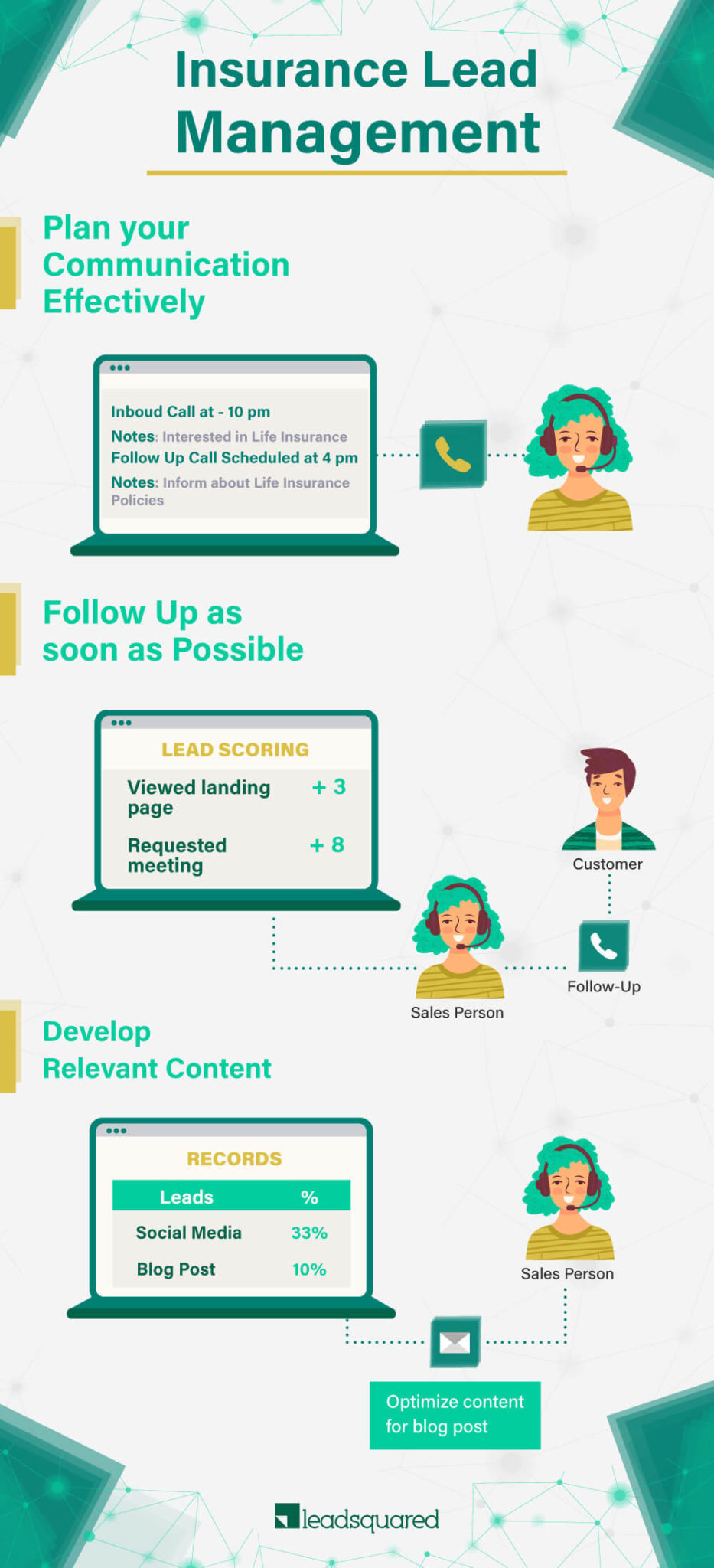So, your marketing efforts are starting to pay off. Your ads are gaining engagement on Facebook and other social media handles. People are downloading your eBooks. There’s a lot of traffic on your blogs.
Dream of every salesperson.
Then, you realize that gaining attention is only one of many hurdles in your sales cycle, and insurance lead management can be a hard thing to do when there’s no serious plan from the onset.
However, there’s no cause for alarm.
If this is you, you’re in the right place.
This article will give you some tips on how to get better at insurance lead management and how it can increase your sales volume.
Get most out of your leads with Insurance Lead Management Software
The last thing you want is to let important prospects slip from your grasp. You want your lead conversion to match the volume in your pipeline. Having proper insurance lead management software helps you to optimize this opportunity better.
Here are three effective ways you can get the best out of your large lead volume.

Plan your communication effectively
One area where most sales and marketing teams go wrong is communicating with leads. Sometimes, there is an assumption that all leads deserve the same type of communication.
Wrong.
This is because leads come in different categories, mostly cold leads, warm leads, hot leads. Naturally, your biggest efforts should be directed towards the hot leads, because they have the highest chance of buying an insurance policy at the moment. Hence, the emails they receive should be different from the other leads since they need less convincing than the rest.
An insurance lead management strategy helps you to streamline your sales process as per the lead category. For instance, hot leads should get emails showing them the best plans or deals in their preferred insurance policy. Are you offering life insurance discounts at the moment? Let them know. It can push them to make that buying decision.
Cold leads, on the other hand, need more nurturing. You may need to create an email series, for instance. They can include testimonials, latest products from your company, and other unique content you think can bring the lead closer to becoming a paying customer.
Follow up as soon as possible
The insurance industry is a very competitive one. Regardless of where the lead is coming from, treat them the same way. Insurance lead management software, in this case, concerns itself with the urgency of your follow up.
Companies who respond to inquiries within an hour are seven times more likely to get a response. You can follow up via emails or phone calls. To remove any confusion, ask the leads their preferred mode of communication in your inquiry forms, for instance.
If you are still unsure, you can send an email first, and let them know someone from your team will call shortly. There’s no rule of thumb, really.
Develop relevant content for your target audience
This is especially important for insurance sales teams with a lower number of leads. It’s also important for teams with a large number of leads but barely closing any. You’re getting these results because you’re probably pushing the wrong content to the right audience.
You can have a sales pipeline filled with 500 leads but only 5 of them are thinking about getting an insurance policy talk less of actually purchasing one. Your content has to be valuable, relevant, and consistent. People will only engage with the things that address their pain points.
Take a look at your content framework.
Is it addressing the pain points of your target audience?
Whatever your medium is, from blog posts to white papers, webinars, and infographics, your team should have a clearly defined content strategy. The strategy should be built for certain buyer personas i.e fictional representations of your ideal customers. This way, you’re addressing real pain points.
Ultimately, churning valuable content has the potential to increase the quality and quantity of your leads over time.
Choosing a CRM for Insurance Lead Management
Insurance lead management becomes a whole lot easier when you have a dedicated CRM.
It fits into every point we raised above.
For prioritizing your communication, insurance CRM helps to rank your leads based on certain criteria that have been preset such as age, financial status, interests, location, policy preferences, etc. You’re able to identify the most relevant leads and assign them to members of your sales team automatically. You can also plan your email messaging based on the segmentation.
This saves you time that would have otherwise been wasted chasing buyers that aren’t ready.
In the case of follow-ups, an insurance CRM automates responses to inquiries, significantly reducing the response time. Unlike in manual systems, where salespeople have to manually sort leads one after the other in an Excel sheet or on paper.
Insurance CRMs also show you, to an extent, if your content is working or not. Since you’re able to capture leads from all your sales channels, including online and offline, you can see where the best leads are coming from. You can also see the channels delivering the lowest number of leads. This allows you to rework your content (ads, blog posts, videos, etc.) if necessary.
Insurance lead management and CRM software often times work hand-in-hand, such that you have an all-in-one solution for managing both existing customers and prospects.
Increase sales with LeadSquared’s CRM
If you run a business in the insurance sector, you already know how difficult it can be to get new customers.
Having an insurance lead management system within your CRM helps you to streamline the process and potentially increase sales volume.
LeadSquared’s CRM offers one of the best platforms for managing leads in the insurance industry. Book a free demo now,







